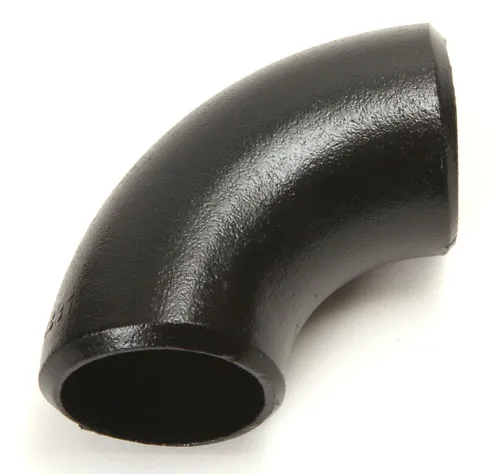-
Cangzhou Yulong Steel Co., Ltd.
-
Phone:
+86 13303177267 -
Email:
admin@ylsteelfittings.com
- English
- Arabic
- Italian
- Spanish
- Portuguese
- German
- kazakh
- Persian
- Greek
- French
- Russian
- Polish
- Thai
- Indonesian
- Vietnamese
- Zulu
- Korean
- Uzbek
- Hindi
- Serbian
- Malay
- Ukrainian
- Gujarati
- Haitian Creole
- hausa
- hawaiian
- Hebrew
- Miao
- Hungarian
- Icelandic
- igbo
- irish
- Japanese
- Javanese
- Kannada
- Khmer
- Rwandese
- Afrikaans
- Albanian
- Amharic
- Armenian
- Azerbaijani
- Basque
- Belarusian
- Bengali
- Bosnian
- Bulgarian
- Catalan
- Cebuano
- China
- China (Taiwan)
- Corsican
- Croatian
- Czech
- Danish
- Esperanto
- Estonian
- Finnish
- Frisian
- Galician
- Georgian
- Kurdish
- Kyrgyz
- Lao
- Latin
- Latvian
- Lithuanian
- Luxembourgish
- Macedonian
- Malgashi
- Malayalam
- Maltese
- Maori
- Marathi
- Mongolian
- Myanmar
- Nepali
- Norwegian
- Norwegian
- Occitan
- Pashto
- Dutch
- Punjabi
- Romanian
- Samoan
- Scottish Gaelic
- Sesotho
- Shona
- Sindhi
- Sinhala
- Slovak
- Slovenian
- Somali
- Sundanese
- Swahili
- Swedish
- Tagalog
- Tajik
- Tamil
- Tatar
- Telugu
- Turkish
- Turkmen
- Urdu
- Uighur
- Welsh
- Bantu
- Yiddish
- Yoruba

Nov . 19, 2024 11:32 Back to list
astm a 106 gr b
Understanding ASTM A106 Gr B A Comprehensive Overview
ASTM A106 Gr B is one of the most widely used specifications in the field of carbon steel pipes, especially in high-temperature service applications. The standard, developed by ASTM International, outlines the requirements for seamless and welded carbon steel pipe for high-temperature service, which is crucial for constructions in various industries.
What is ASTM A106?
ASTM A106 is a specification for seamless carbon steel pipe for high-temperature service that is frequently used in industries such as oil and gas, power generation, and construction. The “Gr B” designation refers to the Grade B material, which is the most commonly produced grade within this specification. The pipes made under this standard possess excellent dimensional accuracy, mechanical properties, and weldability, making them suitable for various critical applications.
Chemical Composition
The chemical composition of ASTM A106 Gr B is primarily based on carbon, manganese, phosphorus, sulfur, and silicon. The carbon content typically ranges from 0.26% to 0.29%, which provides strength and hardness. Manganese helps to improve hardenability, with content usually around 0.60% - 0.90%. The phosphorus and sulfur content is limited to a maximum of 0.04% and 0.05%, respectively, to enhance ductility and overall performance. Lastly, the silicon content may range between 0.10% to 0.40%, which helps in deoxidization during steelmaking.
Mechanical Properties
ASTM A106 Gr B pipes are known for their exceptional mechanical properties, making them suitable for high-pressure and high-temperature applications. The yield strength is typically around 35,000 psi (240 MPa), while the tensile strength ranges from 60,000 psi (415 MPa) to 70,000 psi (485 MPa). The elongation, which indicates ductility, is around 20% on an 8-inch sample. These properties make the material reliable for transporting fluids in demanding conditions and applications.
astm a 106 gr b

Manufacturing Process
The manufacturing process for ASTM A106 Gr B pipes involves several steps to ensure high quality and reliability. The process begins with the creation of steel ingots or slabs, which are then subjected to heating and hot working to form a seamless pipe. The pipe is then heat treated, often through normalizing or annealing, to achieve the desired mechanical properties. Finally, the pipes undergo rigorous inspection and testing to ensure compliance with the ASTM standards, including non-destructive testing, dimensional checks, and pressure testing.
Applications
The versatility of ASTM A106 Gr B makes it ideal for various applications, especially in the oil and gas industry, where it is frequently used for conveying steam, water, and gas at high temperatures and pressures. Other notable applications include the construction of pipelines, refineries, chemical plants, and power generation facilities. The ability of ASTM A106 Gr B pipes to withstand the harsh environments present in these sectors emphasizes its importance in engineering and industrial applications.
Advantages
One of the primary advantages of ASTM A106 Gr B is its high strength-to-weight ratio, making it easier to handle and install compared to other materials. It is also highly resistant to corrosion and scaling at elevated temperatures, which enhances the longevity and reliability of installations using this pipe grade. The excellent weldability enables easy construction of complex piping systems, further adding to its appeal among engineers and contractors.
Conclusion
In summary, ASTM A106 Gr B is a crucial specification in the field of carbon steel piping, particularly for high-temperature applications. Its robust chemical and mechanical properties, combined with its versatility and ease of use, make it a preferred choice across various industries. Whether in constructing pipelines for transporting oil and gas or manufacturing components for power generation, ASTM A106 Gr B plays a pivotal role in ensuring the safety, efficiency, and reliability of industrial operations. Understanding its specifications and applications can help engineers and procurement professionals make informed decisions in their projects.
Latest news
-
ANSI 150P SS304 SO FLANGE
NewsFeb.14,2025
-
ASTM A333GR6 STEEL PIPE
NewsJan.20,2025
-
ANSI B16.5 WELDING NECK FLANGE
NewsJan.15,2026
-
ANSI B16.5 SLIP-ON FLANGE
NewsApr.19,2024
-
SABS 1123 FLANGE
NewsJan.15,2025
-
DIN86044 PLATE FLANGE
NewsApr.19,2024
-
DIN2527 BLIND FLANGE
NewsApr.12,2024
-
JIS B2311 Butt-Welding Fittings LR/SR 45°/90° /180°Seamless/Weld
NewsApr.23,2024











